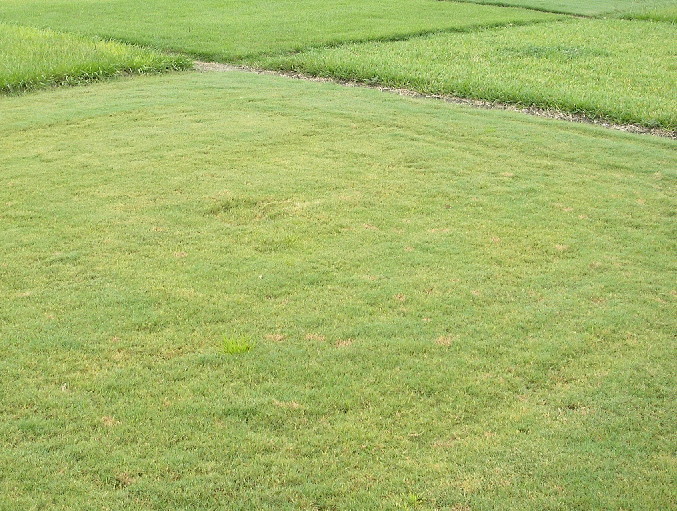Turfgrass and Ornamental Plant Evapotranspiration
and Crop Coefficient Literature Review:
Turfgrass Species in Florida
Bermudagrass (Cynodon dactylon)

 Bermudagrass is a warm-season perennial grass that grows best under extended periods of high temperatures, moderate to high and has a high light requirement (Duble, 2009). It is extremely heat tolerant, but very intolerant of shade. It has excellent wear, drought and salt tolerance and is good choice for ocean front property, and it is competitive against weeds. Bermudagrass is targeted primarily for athletic fields and golf courses in Florida (Haydu et al., 2008).
Bermudagrass is a warm-season perennial grass that grows best under extended periods of high temperatures, moderate to high and has a high light requirement (Duble, 2009). It is extremely heat tolerant, but very intolerant of shade. It has excellent wear, drought and salt tolerance and is good choice for ocean front property, and it is competitive against weeds. Bermudagrass is targeted primarily for athletic fields and golf courses in Florida (Haydu et al., 2008).
Bermudagrasses can be established by hand (sprigging), sodding, or pulging. Fertilization and watering must be properly done. During prolonged droughts, bermudagrass may go dormant if it does not receive irrigation. A complete recommended fertility rates for this turfgrass throughout north, central, and south Florida can be find at Trenholm et al., 1991,and other management practices at Newman (2008).
Disadvantages
Bermudagrass has a number of cultural and pest problems and therefore, will need a higher level of maintenance inputs than most other grasses (Trenholm et al., 1991). In central and north Florida, bermudagrasses become dormant in cold weather. Overseeding in fall with ryegrass is a common practice to maintain year-round green color. Bermudagrasses have very poor shade tolerance and should not be grown underneath tree canopies or building overhangs. It can also be a very invasive and hard to control weed in some turf settings.


